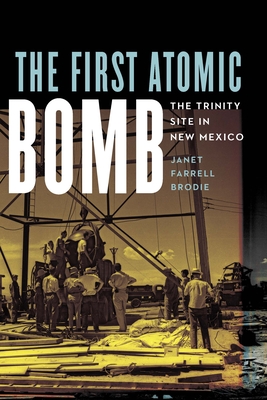$75.00
Usually Ships in 1-5 Days
Description
2024 Southwest Book of the Year
On July 16, 1945, just weeks before the atomic bombing of Hiroshima and Nagasaki that brought about the surrender of Japan and the end of World War II, the United States unleashed the world’s first atomic bomb at the Trinity testing site located in the remote Tularosa Valley in south-central New Mexico. Immensely more powerful than any weapon the world had seen, the bomb’s effects on the surrounding and downwind communities of plants, animals, birds, and humans have lasted decades.
In The First Atomic Bomb Janet Farrell Brodie explores the history of the Trinity test and those whose contributions have rarely, if ever, been discussed—the men and women who constructed, served, and witnessed the first test—as well as the downwinders who suffered the consequences of the radiation. Concentrating on these ordinary people, laborers, ranchers, and Indigenous peoples who lived in the region and participated in the testing, Brodie corrects the lack of coverage in existing scholarship on the essential details and everyday experiences of this globally significant event. The First Atomic Bomb also covers the environmental preservation of the Trinity test site and compares it with the wide range of atomic sites now preserved independently or as part of the new Manhattan Project National Historical Park. Although the Trinity site became a significant node for testing the new weapons of the postwar United States, it is known today as an officially designated National Historic Landmark. Brodie presents a timely, important, and innovative study of an explosion that carries special historical weight in American memory.
About the Author
Janet Farrell Brodie is a professor emerita of history at Claremont Graduate University. She has published articles on atomic secrecy in multiple venues, including the Journal of Social History and the Journal of Diplomatic History and in the edited volume Inevitably Toxic: Historical Perspectives on Contamination, Exposure, and Expertise.
Praise For…
"Methodically researched and expertly written, this book is a welcome addition to the historiography of the atomic bomb and its use."—J. Bourboun, Choice
“From the economics of eminent domain to the politics of historic preservation, environmental despoliation, and public health, Janet Farrell Brodie’s deeply researched, thoroughly compelling, and powerfully human history of the Trinity site should be read by everyone interested in the American West and the nuclear age.”—David M. Wrobel, author of America’s West: A History, 1890–1950
“Janet Farrell Brodie deftly weaves a ‘bottom up’ narrative into what is largely seen as a ‘top-down,’ tightly controlled military history. Her correct framing of Trinity as the first atomic experience reminds the reader of the intersection between local and global histories. . . . Clear, engaging, and substantive.”—Natale A. Zappia, author of Raiders and Traders: The Indigenous World of the Colorado Basin, 1540–1859
